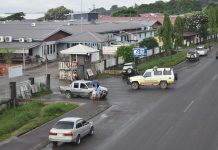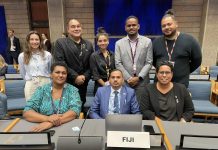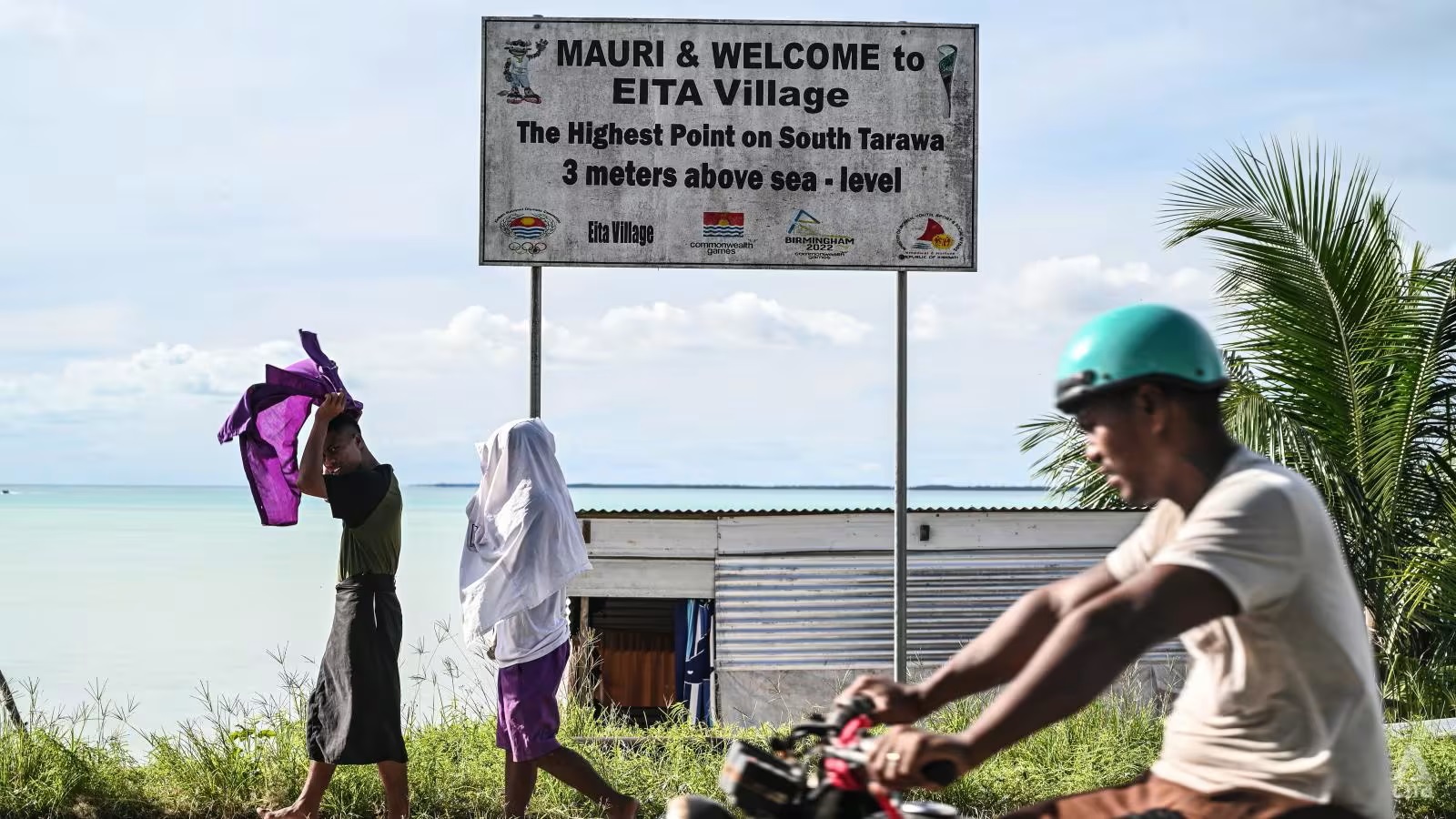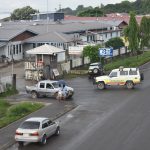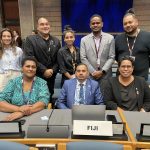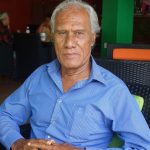As sea levels rise, the tiny Pacific nation has tussled between leaving for an undeveloped estate in Fiji or scrapping for climate finance to save its land with coastal defences. CNA explores its struggle in the last of a three-part series on how Pacific island-nations are fighting climate change, and the lessons they offer.
By Jack Board
There is an old name for the Pacific nation of Kiribati, one that embodies a deep understanding of the world.
For generations, the indigenous seafarers across a vast expanse of the ocean knew their homeland as Tungaru.
The tunga, explained Pelenise Alofa, a longtime climate activist in the country, is the name given to the plug for scupper holes in boats, which allows water to drain out.
“We are the tunga of the world. We’re stuck in there, holding the water so it won’t come into the canoe. Once you pull out that tunga, or as soon as it’s not there, water comes in straight away. And the boat sinks. So that’s really a metaphor,” Alofa said.
It is a tale and belief that has filtered down to the modern i-Kiribati – the name given to local people – today. Far from wanting to be considered marooned on a remote outpost, i-Kiribati feel central to the climate change story.
“The name is related to the importance of Kiribati in the world where it is sitting. We are right in the centre. And we are the ones that keep the world afloat and from sinking. So it’s important for us to keep Kiribati intact in its right place,” she said.
The country is a geographical curiosity – it is made up of 32 coral atolls – ring shaped islands – spread out across a 3.4 million sq km expanse of ocean. Of that, just 811 sq km are land. It is the only nation in all four of the world’s hemispheres and is the first place on earth to see the sunrise.
Most of the land is also barely above sea level, leading it to become one of the most vulnerable countries to disappearing beneath the waves.
Beyond memories and folklore, right now Kiribati’s very existence is in flux. It has become caught in geopolitical tussles for influence and climate funding, while embarking on its own ambitious schemes to secure its future, such as purchasing a huge swathe of land in neighbouring Fiji.
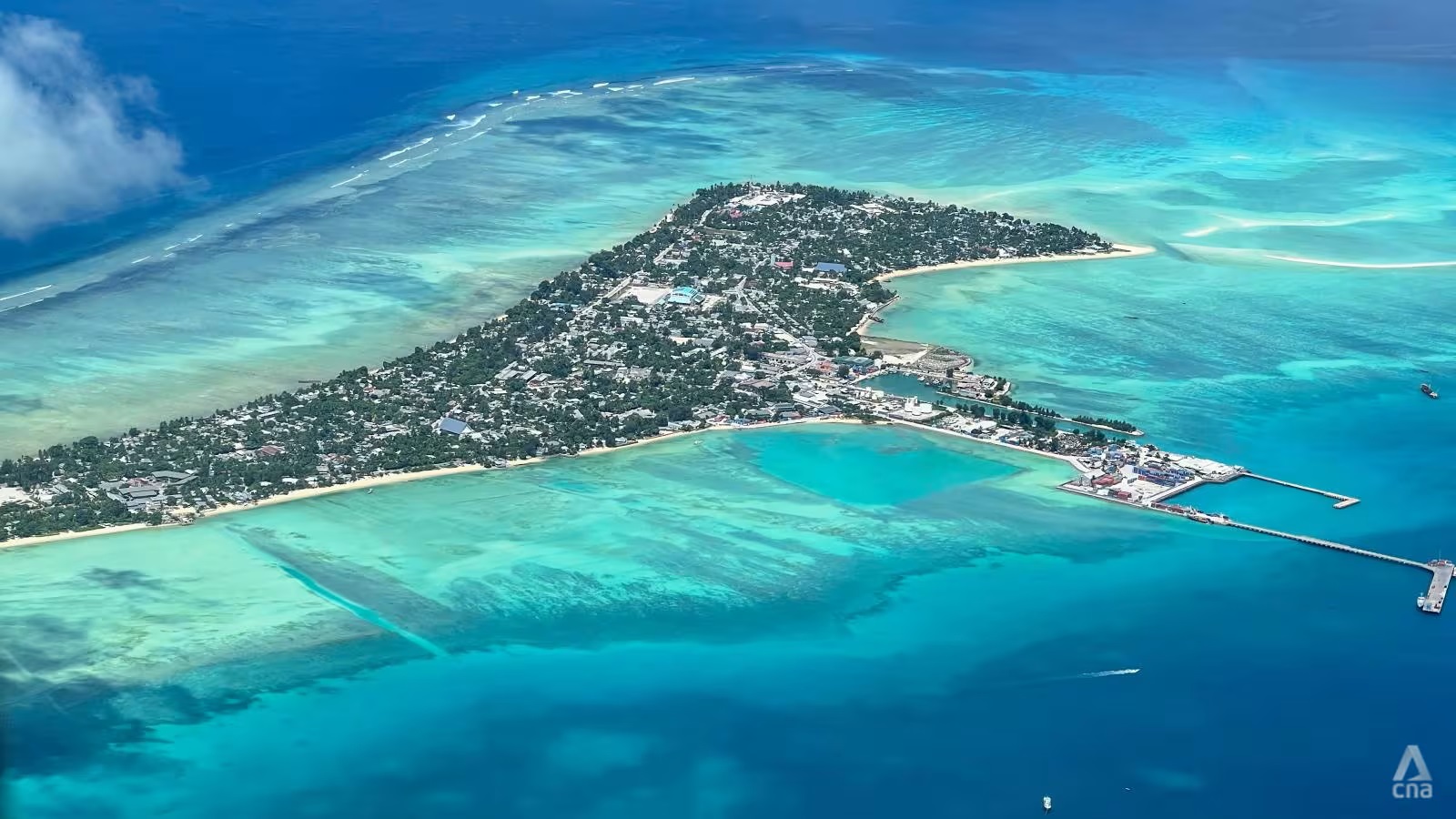
On the main island of South Tarawa, some locals poke fun at the jeopardy. A sign that reads “Welcome to Eita Village, the highest point on South Tarawa” stands right next to the sea. The altitude of the land here is just three metres. South Tarawa is flanked on one side by an aquamarine lagoon that one might easily mistake for a resort haven in the Maldives. The other side is exposed to the Pacific Ocean.
Being surrounded by water has been the way of life for the i-Kiribati, but due to global warming, it could be their collective undoing.
Sea level rise here is happening much faster than the global average, due to a variety of factors, such as its location in the Pacific and ocean circulation patterns. On some islands, sea level rise is four times greater than elsewhere.
It is causing severe coastal erosion, flooding during storm periods, impacts on freshwater resources and exacerbating land pressures.
The situation became so worrying that the previous government administration made an extraordinary purchase of land in another country, laying physical foundations for moving the entire population.
But, in a sharp pivot from a previous “migration with dignity” policy, the leaders of Kiribati are now set on digging in, embarking on efforts to fortify and reshape its land instead of moving away. It has left residents scrambling with divergent plans amid an uncertain future.
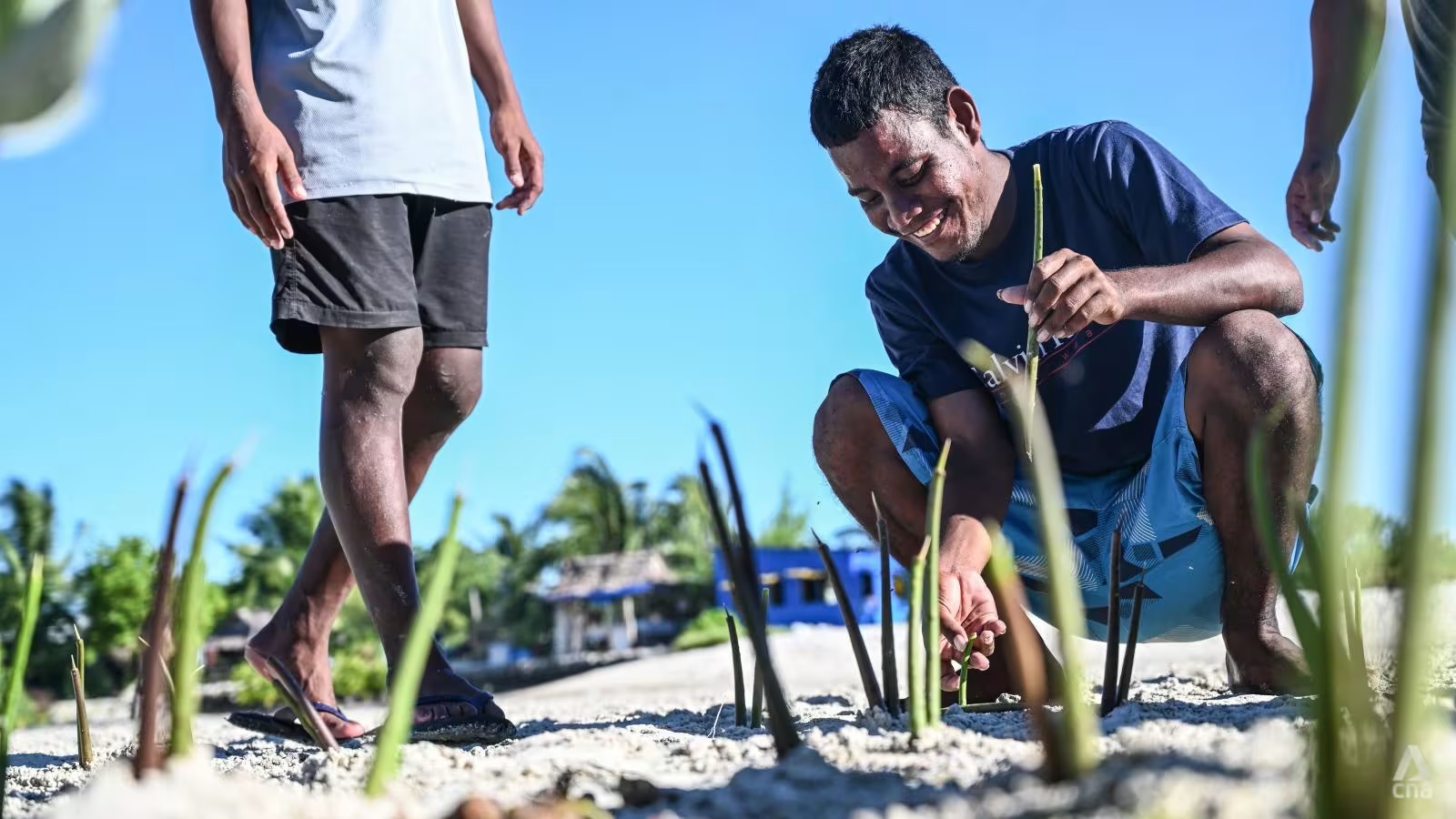
CHOOSING POWERFUL FRIENDS
In 2014, then-president Anote Tong announced the Kiribati government would purchase the Natoavatu estate in Fiji, a 2,220-hectare piece of undeveloped coastal forest land.
“No matter how ambitious it is – for us on low-lying atoll islands it is already too late,” he said during a speech at the time. This was a signature aspect of a policy designed around the notion of “migration with dignity”.
“We don’t have a lot of options. There have been times I have almost lost hope. There’s a limit to how many times you can tell a story people are not listening to. We cannot afford to be paralysed into inaction,” Mr Tong said.
The purchased estate is a pristine slice of paradise, with curving freshwater streams and dense patches of coconut trees that front a shallow sea.
For Alofa, who is the founder of Kiribati Climate Action Network (KiriCAN), the purchase was a forward-looking strategy with little downside.
“I liked it. Because the land is an asset. That land in Fiji will not be gone overnight, it will be there forever. So we really should be investing in not just real estate, but in other fixed assets too,” she said.
However, Fiji is not immune from the same types of challenges that Kiribati is facing – in that very part of the island of Vanua Levu, the Fijian government is in the process of assessing and moving multiple villages due to climate change risks.
A decade on, the Kiribati government is yet to utilise its US$8.77 million acquisition. Prior plans to use it for growing food have not been realised and Tong is out of office after losing a national election in 2016, and being succeeded by current president Taneti Maamau.
In a distinct change of direction, the current Kiribati leadership is taking an altered approach from the migration-friendly policy of the recent past. It surged into office promising to build a more resilient, economically diversified nation.
The government now rejects the idea of being climate refugees on foreign soil and wants its people to stay in their homeland. Instead, Kiribati aims to fortify to survive.
“My government has decided to put aside the misleading and pessimistic scenario of a sinking nation, and has replaced it with a bold scenario,” Maamau told world leaders ahead of global climate talks at COP23 in Germany in 2017, a bold pledge to adapt to a hotter planet.
Later in 2020, Maamau said billions of dollars would be needed for an ambitious agenda to physically raise the country and dredge a large portion of the lagoon adjoining Tarawa. Elevated roads over the sea could also expand usable land.
In an interview with the Guardian at that time, he was adamant that securing such funds would not come at the cost of Kiribati’s independence or expose it to unmanageable levels of debt. However, given its limited resources, taking that path has meant stepping into a geopolitical whirlpool.
The change of government also saw a shift in political allegiances. Previously, Kiribati had recognised Taiwan on the global stage. It formally broke ties with Taipei in 2019, in favour of establishing a strong relationship with Beijing.
What followed over the next two years after building new ties with Beijing amounted to US$161 million of Chinese financial support, according to findings by AidData, an international development research lab. That included funds for projects to build the country’s climate resiliency, such as its transportation and fishing infrastructure.
A local opposition MP at the time criticised the move, calling it “chequebook diplomacy”.
In 2021, Kiribati opened up its enormous marine protected zone – the Phoenix Islands Protected Area – to commercial fishing by Chinese vessels.
Countries in need of financing for infrastructure, disaster relief and loans are faced with this quandary. Kiribati is no exception.
“In the climate vulnerable countries of Kiribati and the Solomon Islands that have recently switched recognition to China, aid from China has increased rapidly,” said Dr Meg Keen, director of the Pacific Islands Program at the Lowy Institute.
“Pacific countries have been clear that they will hedge geopolitical relations by attempting to be “friends to all”. When it comes to survival and the urgent need for climate finance they will partner with those most able to assist,” she said.
Dr Keen explained that geopolitical rivalries are intense in the infrastructure sector and investment in this sector has never been higher or more competitive. “China is very active in the climate adaptation and infrastructure space. It wins more multi-lateral financed infrastructure projects in this region than any other country.”
Between 2008 and 2021, China outspent all governments and banks – aside from the Asian Development Bank – on infrastructure in the Pacific, according to a Lowy Institute analysis.
Just a fraction of those investments were directly aimed at climate change, but Beijing has prioritised finding markets for its green technology, and accessing resources such as minerals, gas, timber, and fish, as well as expanding economic and telecommunications integration, the analysis concluded.
China also has expertise in land dredging and artificial-island building.
And right now, it is clear that South Tarawa is badly in need of greater defences.
In the meantime, Alofa has grown frustrated with the process of trying to scrape together small grants through complicated global climate finance mechanisms. The result has been piecemeal projects that in isolation do little to solve Kiribati’s broader crisis.
It is a common issue for many climate-impacted nations struggling with the hefty costs of adapting to a heating planet.
She said that Kiribati will need to find even more willing, open-pocketed partners if it wishes to embark on saving its land.
“We’re looking at fixing a problem in tiny little bits. We’re working in silos. We’re not going to solve anything with that,” she said. “We need technology. And we need funding.”
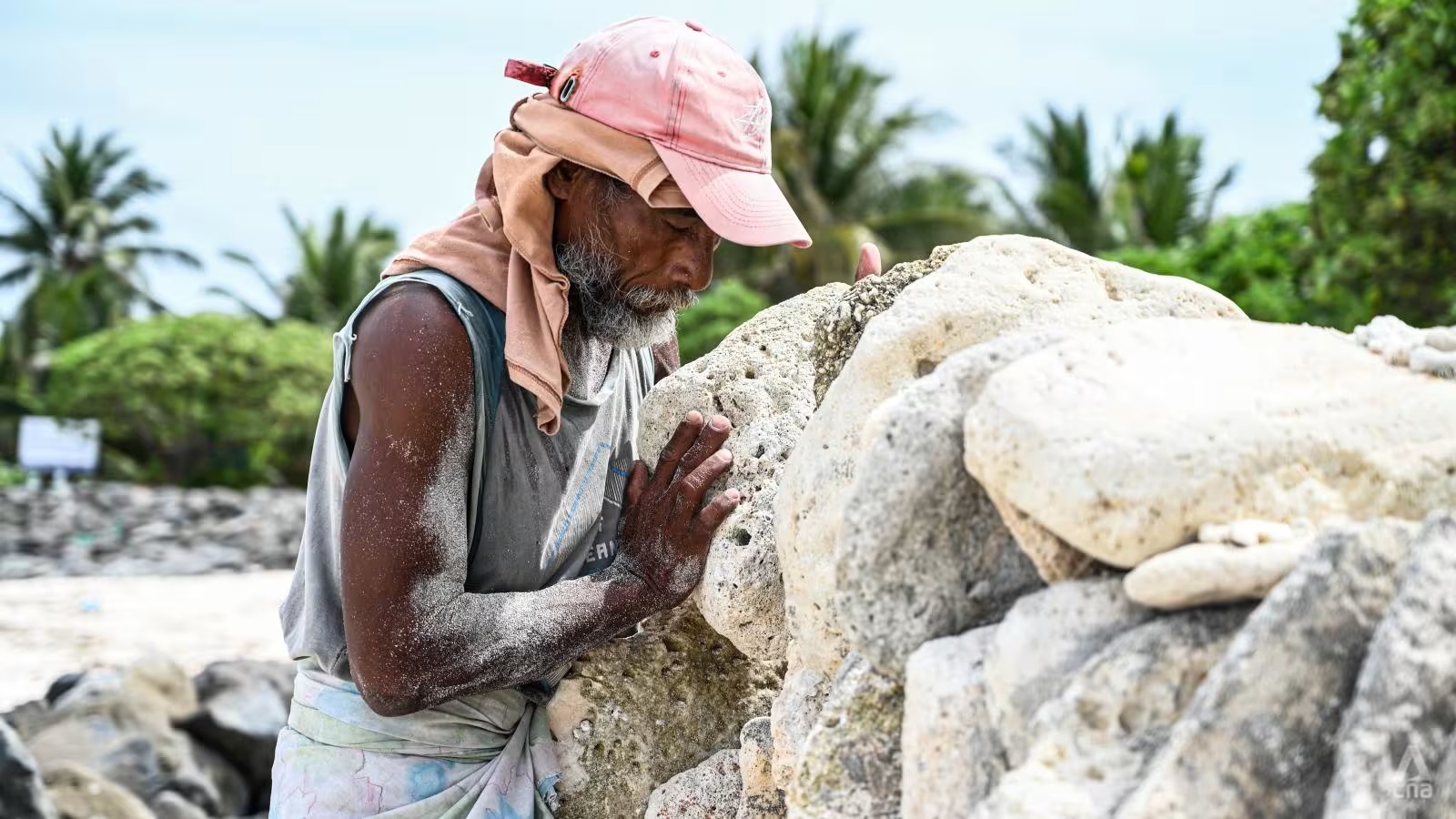
SEA WALL WORRIES
Close to Tarawa’s international airport, a man works alone under the piercing afternoon sun.
For more than a year he has been building his own sea wall in an effort to keep a handful of homes protected from tidal surges and steep erosion on the beach.
There has been a lack of government action and resources to do what is necessary to keep the waves at bay here, he said. His wall is necessary to keep his local community safe, a rudimentary defence in an endless contest with the rising waters.
“If you can survive here, you can survive anywhere,” the man, who gave his name only as Anterea, said.
On the other side of the island, Tiaon Kaumai, another resident, has become a reluctant warden of a similarly crude sea wall protecting the shoreline of his property.
In years gone by, he would come on a near daily basis to repair it from the constant pounding waves. He has almost given up now on maintaining the wall, after countless times restacking the rocks and bricks and other flotsam.
“We are trying our best to make this wall strong. But when the tide comes and is followed by the winds, it will be damaged again, just over and over,” he said.
Storms have become more powerful over the years, he recounted. The tides are taking more of a toll on the exposed shores than ever before.
“I have seen a lot of the sea walls being damaged and the houses that are very close to the sea have been washed away again. We’re not sure if our island will stay intact for long,” he said.
Coral rock, sand bags and concrete blocks erratically line the long narrow coastlines of South Tarawa, largely unsynchronised efforts to minimise coastal erosion. Many previous projects have not been successful, more evidence of the pitfalls of limited climate financing and a lack of expert study before implementing supposed solutions like sea walls.
The World Bank-led Kiribati Adaptation Program that began in 2003 involved a variety of coastal protection measures. But by 2014, a study found that many of the sea walls had actually worsened erosion, were built incorrectly and poorly dissipated energy from waves.
The study found that protecting all of South Tarawa’s coastlines would cost in excess of US$100 million, “without accounting for maintenance costs, rehabilitation or reconstruction after storm events, or the sourcing of material”.
While that would likely be unrealistic, it points to the scale of finances needed for small countries like Kiribati.
World governments pledged just US$700 million to a loss and damage fund at COP28, which took place in late 2023 in Dubai, funds that could be distributed to compensate for the impacts on poorer nations that did not cause global warming.
Yet, it is estimated that between US$100 billion and US$580 billion is needed every year to pay for damages being inflicted by climate change.
“We’ve seen big countries who are building islands. Why can’t we build up our islands? Because we don’t have the money,” Alofa said.
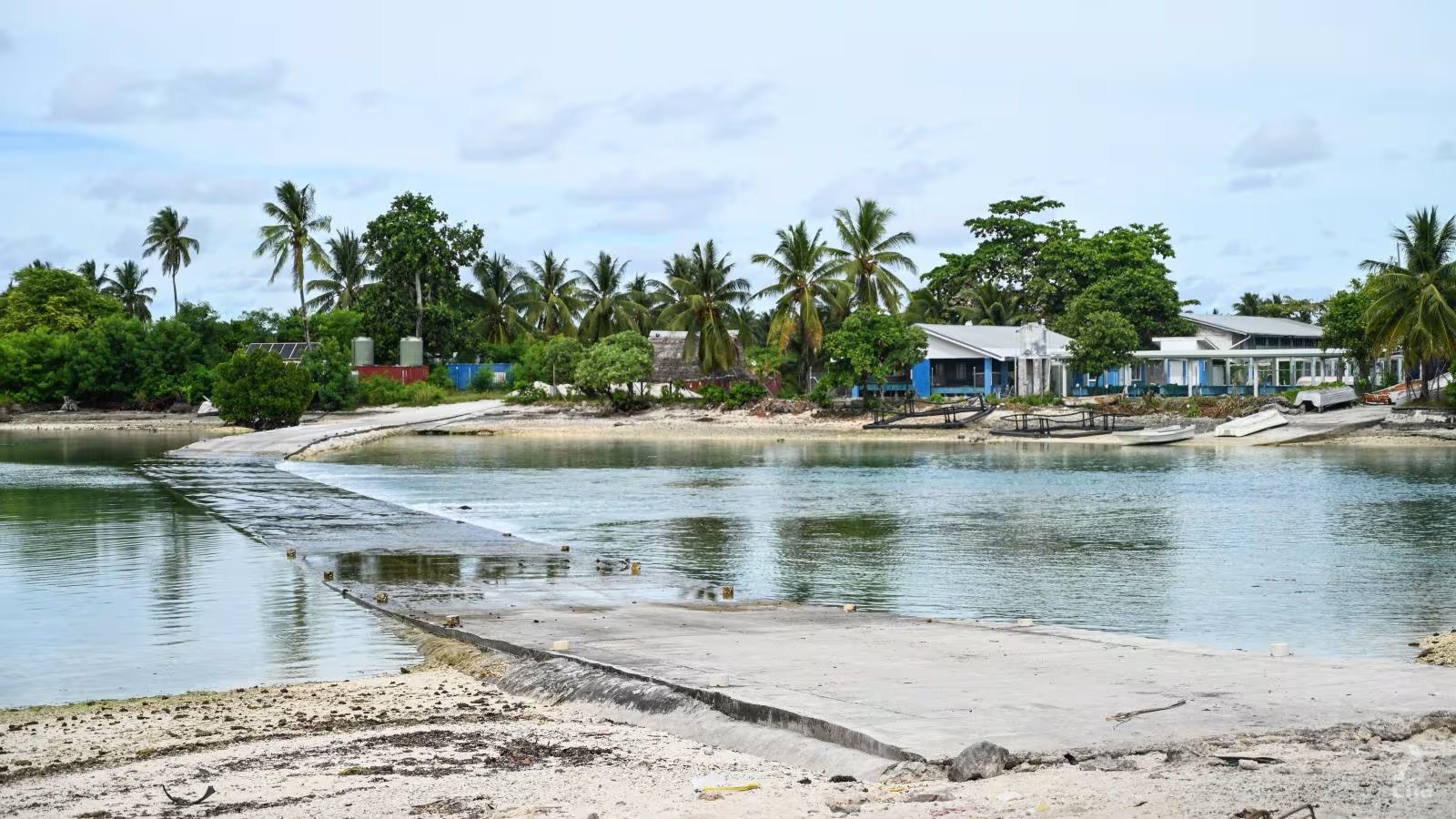
“THEY ARE AFRAID FOR US”
Beyond the rolling waves, Kiribati is also contending with compounding impacts on its land, water, food and livelihoods. When sea levels rise, salt water inundates fresh drinking water sources and arable land for growing crops.
It is testing the resolve of i-Kiribati, many of whom are being tempted by emigrating away from the drain of an existential struggle with the planet.
Maximilian Teea, a young climate activist in his early 20s, has seen many of his relatives already move to New Zealand, chasing a more certain, stable future. He says they regularly urge him to join them.
“They’ve been wanting us to go abroad for our future, because they are afraid for us,” he said.
Among the youth, he sees and feels a prevailing fear about the future. “I think that the young people are scared. They think it will get worse and worse.
“And well, who doesn’t want a better future? Some, if they get a chance to go abroad, maybe 90 per cent will go,” he predicted.
He is resisting those calls, putting his faith in finding local solutions and aiming to be a carrier of his people’s culture.
“My culture is my first priority and everything (to me). Without this culture, we won’t be known in the world. So I’d rather stay here, until maybe it’s the end,” he said.
Job opportunities in a society moving away from traditional ways of island living are limited.
The government has stated its ambition to focus on building a thriving tourism industry to generate more local jobs and economic opportunities. The otherworldly-blue lagoons offer a blank slate for resort operators, but growth in the sector has stalled in recent years.
While the major reason for leaving is economic, said Kamoia Kanoua, director of I-rekenrao, a women’s advocacy and support group in Tarawa, climate change is weighing on people’s minds too.
“It’s a difficult decision. Because they are thinking that Kiribati is sinking … and they’re looking at the future for their children,” she said.
For those unwilling or unable to go overseas, relocating to the dense urban settlements of Tarawa is the next best option. That is heaping pressure on limited space and resources.
The city homes about half of the entire country’s population of around 130,000 people. Poverty is rife – the World Bank estimates that about 30 percent of the population lives below the poverty line, living on less than US$3.20 per day.
The struggle is readily apparent in Tarawa, and particularly for women, living is increasingly fraught.
“They want the bright city lights, and they want to come because there are buses and a lot more to offer in Tarawa compared with living on the outer islands,” Kanoua said.
“It’s getting really worse for women, but we’re trying to adapt. The main problem is that water now is not safe to drink, not safe to cook with, and especially for them to bathe and clean themselves.”
For local men, fishing is a staple income provider. But global warming is having impacts on their ability to earn at sea as well.
“The catch has not been consistent for a while. There are times when we will go out and have a good catch and times with very little,” said a local fisherman, Tokoia, who also wanted to be known by just one name.
“But I will stay, because there is no other place for me in the world but here. I choose to stay and die here.”
While the “migration with dignity” policy may have disappeared from government policy papers, it lingers in people’s thinking, according to Alofa.
She believes there is nothing wrong with having the conversation and acknowledging that staying and leaving might both be viable options for i-Kiribati.
“The reality is we can have both. We can talk about both,” she said.
“I cannot see us leaving at this time. I’m still trying to adapt. And our work is to say, ‘no, we’re not drowning, we will fight this problem’.
“But maybe in the next 20 or 50 years, our great-grandchildren may say, ‘we can’t stay here anymore’. We really do not know what the future holds, said Alofa.


